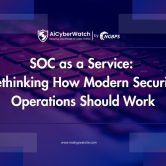Data Loss Prevention (DLP) is crucial for protecting sensitive information, but choosing the right solution can be challenging. Traditional DLP relies on in-house deployment, requiring dedicated IT teams to manage policies, updates, and incident responses. While it offers control, it can be complex and resource-intensive.
On the other hand, Managed DLP outsources these responsibilities to security experts, providing continuous monitoring, advanced threat detection, and faster response times. This approach reduces the burden on internal teams while enhancing compliance and scalability.
So, which one is right for you? If your organization has the expertise and resources, Traditional DLP may work. But if you need efficiency, expertise, and 24/7 protection, Managed DLP could be the better choice. Let’s explore the key differences to help you decide!
| Feature | Managed DLP Services | Standard DLP Solutions |
|---|---|---|
| Expertise and Knowledge | MSSPs bring specialized, in-depth expertise in data protection and security. | Internal team may lack specialized knowledge in DLP management. |
| Monitoring & Support | 24/7 monitoring and continuous support, ensuring immediate response to data threats. | Limited to business hours or periodic monitoring by in-house team. |
| Scalability | Highly scalable, adapting to growth, increased data volumes, or changing regulations. | Scaling can be cumbersome and requires manual intervention by the internal team. |
| Regulatory Compliance | Automatically aligned with regulatory requirements (e.g., DPDP Act, GDPR) and real-time updates. | Internal teams are responsible for keeping policies up to date with evolving regulations. |
| Threat Detection & Response | Proactively detects and mitigates sophisticated threats using global threat intelligence. | May struggle to identify advanced or new types of threats without additional tools or expertise. |
| Incident Response & Forensics | Immediate incident response and forensics support, including breach investigation and compliance reporting. | Incident response can be slower, and internal resources may lack forensic expertise. |
| Cost Efficiency | Predictable, cost-effective with bundled services for monitoring, updates, and compliance. | Requires additional resources for staffing, system updates, and infrastructure management. |
| Policy Configuration & Tuning | MSSPs continuously optimize DLP policies to address emerging threats and organizational needs. | Policies may be static and require manual adjustments based on internal expertise. |
| Data Loss Prevention Management | Full-service management of the DLP system, including configuration, monitoring, updates, and reporting. | Internal team is responsible for the complete setup, management, and ongoing maintenance. |
| Proactive Management | Proactively updates and adjusts DLP strategies to anticipate new threats and regulatory changes. | Primarily reactive management based on issues or incidents that arise. |
| Report Generation | Automated and detailed compliance reporting for audits and regulatory checks. | Internal teams may need to manually generate reports, increasing time and effort. |
This table highlights the clear advantages of Managed DLP Services over Standard DLP Solutions in terms of expertise, scalability, proactive management, and regulatory compliance, making Managed DLP a more efficient and effective option for organizations seeking robust data protection.
Conclusion
Choosing between Managed DLP and Traditional DLP depends on your organization’s resources and security needs. While Traditional DLP offers control, Managed DLP provides expert oversight, scalability, and AI-driven threat detection. Partnering with a solution like AiCyberWatch ensures proactive data protection, reducing risks and compliance burdens. For businesses seeking advanced, hassle-free security, Managed DLP with AiCyberWatch is the smarter, future-ready choice. Secure your data today!




